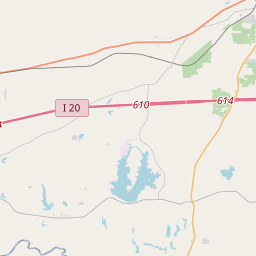Jerusalem Missionary Baptist Church







After the Civil War many African Americans in Texas struggled to gather the resources necessary to establish churches in their communities. In 1874 a group of African American residents of this section of Marshall (then known as Hubbard's Hill), led by the Rev. William Davis, overcame a lack of resources and organized Jerusalem Baptist Church. Prince Monroe and Jacob Martin were selected as church trustees.
During the pastorage of the Rev. Mr. Davis (1874-1888) the congregation constructed its first church building at a nearby site and organized a Sunday School. About 1890 a Baptist Training Union was established. The sanctuary was expanded to include a pastor's study, choir room, and a bell tower in the early 1920s. A parsonage was added in 1930. The congregation built a new sanctuary at this site in 1948.
The congregation initiated several youth programs in the early 1950s including a kindergarten, Boy Scouts, Girl Scouts, and a youth center. During this time the church expanded its women's missionary activities. The church completed renovations to its facilities in 1993.
Jerusalem Baptist Church plays an important role in community affairs and continues to provide spiritual guidance for the community
As one of the most visible programs of the Texas Historical Commission (THC), historical markers commemorate diverse topics in Texas history, including: the history and architecture of houses, commercial and public buildings, religious congregations, and military sites; events that changed the course of local and state history; and individuals who have made lasting contributions to the state, community organizations, and businesses.
The state of Texas was once an independent country known as the Republic of Texas. It gained independence from Mexico in 1836 and was a separate nation until it was annexed by the United States in 1845.
During the mid-19th century, Harrison County played a significant role in the development of Texas. The discovery of oil in the nearby East Texas Oil Field in 1930 brought prosperity and growth to the county. This led to the establishment of several oil companies, driving economic development and creating job opportunities for local residents.
Harrison County was also deeply impacted by slavery and the Civil War. Prior to the war, the county was home to numerous large plantations that relied on enslaved labor for agricultural production. The war left a lasting impact on the county, which continued to struggle with racial tensions and inequality in the years following the war.
Today, Harrison County remains an important part of Texas history and boasts a diverse and vibrant community. The county is home to a number of historic sites, including the Texas and Pacific Railway Depot and the W.C. Dewberry Home and Museum, which showcase the area's rich cultural heritage. With its blend of history and modern progress, Harrison County continues to be a significant contributor to the growth and development of Texas.
Harrison County Timeline
This timeline provides a condensed summary of the historical journey of Harrison County, Texas.
- 1839 - Harrison County established as a county in the Republic of Texas
- 1840 - Marshall becomes the county seat of Harrison County
- 1861-1865 - Harrison County residents serve in the Confederate Army during the American Civil War
- 1873 - Great Fire of Marshall destroys much of the city
- 1881 - First telephone exchange established in Marshall
- 1902 - Texas and Pacific Railway brings economic growth to the county
- 1930s - Oil discovery leads to an economic boom in Harrison County
- 1979 - East Texas Oil Museum opens in Kilgore, showcasing the region's oil industry
- 2005 - Hurricane Rita causes significant damage to the county
- 2020 - Present day